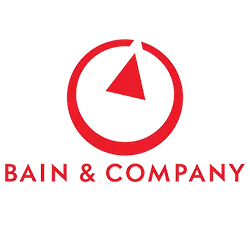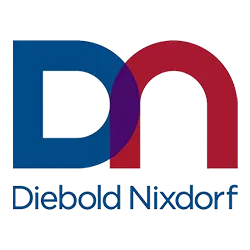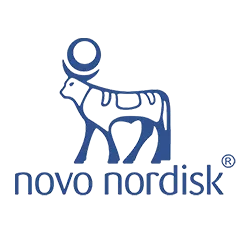
Top 50 Change Management Interview Questions & Answers – Part 4
Q: How can change management processes be adapted to support DevOps or Agile environments?
A: Traditional change management can seem at odds with DevOps/Agile, which emphasize rapid, frequent deployments. However, change management can absolutely support these environments by evolving its practices:
-
Automate Approvals for Low-Risk Changes: In a DevOps CI/CD pipeline, if code changes pass all automated tests and meet predefined criteria, the change management process can allow auto-approval and deployment without waiting for a CAB meeting. Basically, embed change approval into the pipeline – a successful pipeline run with all checks is the “approval”. This speeds up safe routine changes.
-
Risk-Based Change Models: Adopt a tiered approach. For example, small changes (minor code fixes, configuration toggles) that have low impact can be standard changes that don’t need manual review. Only high-risk changes (maybe affecting architecture or major releases) get full CAB attention. DevOps teams can deploy daily under standard changes, and the CAB focuses on exceptions.
-
Continuous Communication and Collaboration: Instead of adversarial or paperwork-heavy interactions, change managers can be part of the Agile teams’ sprint planning or release planning sessions. This way, upcoming changes are known early. In effect, the change function shifts to consulting and facilitating – helping teams design rollout plans that meet controls – rather than purely gating after development.
-
Change Advisory “Board” to “Guild” model: Some companies replaced a formal CAB meeting with a more continuous, chat-based or as-needed advisory group. For instance, having an online channel where developers can quickly ask “Hey, I plan to do X, any objections or considerations?” and get quick feedback from ops, security, etc. It’s less formal but still provides oversight.
-
Decentralize where possible: You can train product teams to assess their own changes against risk criteria (a checklist or automated risk scoring). If they self-certify a change as low risk, they can deploy. Change management provides the framework and audits occasionally, rather than reviewing every single change centrally. This empowerment requires trust and competency in teams, which DevOps culture strives for.
-
Integrate Tools: Use integrations between source control/CI tools and the ITSM change system. For example, automatically create change records from deployment pipelines with relevant info (what was changed, who initiated, auto-generated risk score). This keeps the record-keeping for audit, but it’s generated as part of the developer’s normal workflow, not an extra manual form.
-
Post-Deployment Validation & Monitoring: In fast environments, you rely on strong monitoring. Change management can require that teams have good telemetry. Instead of delaying a change for approval, allow quick deploy but monitor – if something goes wrong, alerts trigger rollback. Essentially, “fast to deploy, fast to recover” is a DevOps mantra. Change process should ensure that recovery mechanisms (like feature toggles, canary deployments, quick rollback scripts) are in place, since that’s another way to mitigate risk without heavy upfront approval.
-
Still enforce change policies for compliance: In highly regulated industries, even DevOps teams need to show controls. Adaptation means capturing evidence (test results, code review records, etc.) automatically to satisfy auditors. Change management can shift to verifying the pipeline’s integrity rather than each change. E.g., audit the DevOps process itself periodically, and if it’s sound, not every change needs eyeballing.
By doing these, we preserve the intent of change management (preventing bad changes from hurting prod) while allowing the speed and continuous delivery that Agile/DevOps require. The result is often higher deployment frequency with minimal increase in incidents – the holy grail of DevOps and ITIL alignment.
Q: How does change management ensure compliance and audit readiness?
A: Change management plays a big role in demonstrating IT compliance (with policies, regulations, security standards) by ensuring every change is tracked and approved. Key points:
-
Documented Trail: Each change request serves as a record of what was changed, who authorized it, and when it happened. Auditors love to see this trail to ensure no unauthorized changes were sneaked in. For example, in a SOX or PCI audit, they may pick random system changes and ask “show me the approved change ticket for this.” A robust change process can produce that evidence.
-
Approval Sign-offs: Compliance often requires that appropriate authority approved significant actions. Change records capture those approvals (CAB, management, etc.). This shows segregation of duties – e.g., the person implementing isn’t the same person who approved, which is a common control to prevent fraud or errors.
-
Risk and Impact Analysis Records: Many regulations (especially in finance and healthcare) expect formal risk assessment for changes. The change management process ensures that for each change, risk was considered and mitigations planned. Auditors might check that high-risk changes had more scrutiny or testing.
-
Policy Enforcement: Change management is usually tied to IT policies like “All production changes must go through change management.” The process helps enforce that by gating deployments. If someone tries to do an out-of-band change, the monitoring or subsequent audit catches it (as unauthorized change). The existence of zero (or very few) unauthorized changes in logs is a sign that policy is working.
-
Traceability to Incidents/Problems: Auditors might ask, “How do you ensure changes didn’t create issues?” By linking incidents to changes, change management shows we investigate and address any change-induced incidents. It also ensures known problems have changes addressing them. This traceability is evidence of a controlled environment working to improve.
-
Audit Logs and Tool Records: The tools (like ServiceNow) keep timestamps of who did what in the change record. That non-repudiation is useful if an audit checks that “CAB approved before implementation date” etc. Many tools can even provide audit-specific reports (like list of changes, who approved them, any that were emergency).
-
Periodic Reviews: Change management might periodically review a sample of changes to ensure process compliance (like an internal audit of change tickets completeness). This self-check helps catch any process drift before an external audit does.
-
Compliance of Changes Themselves: In some cases, change management also ensures that changes meet external regulations. For example, if a change has to do with a compliance update (GDPR, security policy), the CAB might include a compliance officer to check it meets requirements. Or requiring security review for certain changes. This way, compliance is baked into the change process.
In essence, change management creates a structured record and approval structure for modifications in IT, which is exactly what many controls frameworks require. During audits, the change manager often works closely with auditors to pull reports and explain the process. A mature change management process greatly simplifies passing IT audits because it provides confidence that the environment is controlled, changes are authorized, and nothing critical is altered without oversight.
Q: What is a Configuration Management Database (CMDB) and how does it support change management?
A: A CMDB is a centralized repository that stores information about Configuration Items (CIs) – these are the components of your IT environment (servers, applications, network devices, databases, etc.) and their relationships (which server runs which application, what depends on what). In the context of change management, a CMDB is extremely helpful because:
-
Impact Analysis: When evaluating a change, you can consult the CMDB to see what other systems or services might be impacted. For example, if you plan to change Server A, the CMDB might show that Server A supports Application X which is used by Department Y. That info is crucial to assess impact and to know whom to notify or involve. Essentially, the CMDB helps map the blast radius of a change.
-
Avoiding Overlaps: The CMDB, combined with the change calendar, can highlight if multiple changes are targeting the same CI or related CIs. This prevents scheduling conflicts or conflicting changes on the same component because you’re aware of those relationships.
-
Risk Assessment: Knowing the attributes of a CI can inform risk. For example, the CMDB might flag a server as “Production – High Criticality”. So a change on it automatically is treated as high impact. Or if there’s redundancy (two servers in cluster), the risk might be lower because the service won’t fully go down – that info comes from the CMDB relationships.
-
Post-Change Verification: After a change, the CMDB can be updated if the configuration has changed (like new software version, new hardware, etc.). Keeping the CMDB updated means next changes will have accurate data. Some change processes enforce that – e.g., “update the CMDB with the new version number as part of closure tasks.”
-
Troubleshooting: If a change causes an incident, the CMDB helps quickly find what else could be affected or what dependencies might be causing the issue. It’s like a reference map.
-
Auditing and Compliance: The CMDB, tied with change management, can show compliance to configuration standards. For instance, an auditor might ask “How do you ensure changes to systems are reflected in your records?” and you can show that change tickets require updating CI records in CMDB, keeping it current.
In summary, a CMDB is like the brain that stores the knowledge of the IT environment. Change management is much more effective when it can tap into that brain – you make better decisions with full knowledge of relationships and criticality. That’s why many ITSM tools tightly integrate change records with the CMDB: you select the affected CIs on the change ticket, and the system can then provide insights (like risk or impacted services) based on the CMDB data.
Q: Why is it important to link related incidents or problems to a change record?
A: Linking incidents and problems to changes is a best practice because it provides context and traceability:
-
Justification for Change: Often, a change is implemented to resolve a particular problem or a series of incidents. By linking the problem record (or incident) to the change, anyone reviewing the change can see the reason it’s being done. For example, “This change upgrades the software to fix Problem PRB123 which caused multiple incidents.” This helps CAB understand urgency and impact – it ties the change to business pain points.
-
Measuring Success: After the change, if it was meant to fix a problem, the help desk can monitor if incidents related to that problem stop occurring. Because the change is linked to the problem, closing the problem record can be contingent on confirming the change’s effectiveness. It provides a closed loop (problem identified -> change implemented -> problem resolved).
-
Post-Change Incident Analysis: Conversely, if a new incident occurs right after a change, linking that incident to the change record quickly highlights that the change might have caused it. This is extremely useful in troubleshooting – e.g., “Users can’t login after Change CHG100 was applied last night.” Everyone can see that connection and focus on investigating the change’s effect. The change record can then include in its review that an incident was caused, and that will be analyzed in PIR.
-
Auditing and Accountability: Linking records shows that IT is practicing integrated service management. For an audit or management report, one could track how many incidents were caused by changes (stability metric) or how many changes were for proactive problem fixes (which is a positive metric of improvement). It also prevents “orphan” changes with no clear purpose or result.
-
Communication: If a major change is coming, service desk can proactively look at incidents in that area and link them – for instance, there have been 5 incidents about email slowness, and there’s a change scheduled to upgrade the email server. Linking them means if a user calls with that issue, the service desk can say “We plan to resolve this with a scheduled change.” After the change, they can follow up on those incident tickets and close or get feedback.
-
Knowledge Base Building: Over time, these links help build a knowledge base: if someone is working on a similar problem in the future, they can see, “Oh, last year we had Problem X and Change Y fixed it.” That might inform current actions.
Essentially, linking ensures that changes are not happening in isolation. They are either solving something (linked to a problem/incident) or if they inadvertently create something (linked to an incident), it’s visible. This integrated approach ensures accountability for outcomes – every change should ideally have a rationale (even routine improvements are solving an “problem” of needing better performance, etc.), and any negative outcomes are tracked back to their source for learning.
Q: How do you determine the best timing for scheduling a change implementation?
A: Choosing the right timing for a change is crucial to minimize impact. I consider several factors:
-
Business Calendar and Peak Hours: I find out when the affected service is least used. For example, if it’s an internal HR system, maybe after office hours on a weekday or on a weekend is best. For a customer-facing website, maybe late night or early morning when traffic is lowest globally. Avoid known busy periods like end-of-month for finance systems or holiday season for retail, unless the change is directly needed for those periods.
-
Maintenance Windows: Many organizations have predefined maintenance windows (e.g., every Saturday 2 AM – 6 AM) when users expect possible downtime. Scheduling in those windows is usually ideal as stakeholders are already prepared for potential outages.
-
Team Availability: Ensure that the required technical staff will be available and alert. Sometimes this means normal working hours if it’s safer to have the whole team on hand, even if business usage is moderate. Or ensuring if it’s late night, the on-call engineers are rested and ready. Never schedule a complex change when key people are on vacation or unreachable.
-
Lead Time for Approval and Communication: Don’t schedule a change too hurriedly. Even if a slot tomorrow 3 AM looks free, if you can’t get approvals and notify users in time, it’s not a good timing. Provide enough lead time for CAB approval and at least 24-48 hours notice (for minor changes) or more for major changes to stakeholders.
-
Duration and Buffer: Consider how long the change might take and add some buffer. If you expect 1 hour downtime, schedule a 2 hour window to be safe. This ensures even if things run late, you’re hopefully still within a low-impact period. For example, if your low usage period ends at 6 AM, you’d aim to be done by maybe 5 AM in case of slippage.
-
Dependencies and Sequence: If the change is part of a series (like you need to do database change before application change), schedule in correct sequence perhaps in the same window or consecutive windows. And if multiple changes touch the same system, maybe bundle them in one go to avoid repeated outages (but careful not to over-stack too many tasks).
-
Timezone Considerations: In global organizations, there’s almost no perfect time for everyone. You choose the “least bad” time. Sometimes this means very late night in HQ might actually be midday for another region – coordinate with regional teams to ensure no critical work is happening there at that time (or possibly do separate region-by-region changes).
-
Change Freeze Periods: Avoid scheduling during any freeze/blackout period unless it’s the exception that we discussed.
-
Weather/External Events: In some cases, even outside factors matter. For instance, avoid doing a data center change during a predicted big storm if possible (redundancies are there, but why risk simultaneous issues). Or don’t schedule on major national holidays or during known industry events when staff might not be around if something goes wrong.
Ultimately, I often propose a timing and then validate it with stakeholders: e.g., “We plan to do this on Sunday at 1 AM – does that work for the business?” If there’s pushback (“Actually in Dubai office that’s the start of week and they’ll be working”), adjust accordingly. By balancing technical and business considerations, the goal is to find a window where the change can be executed safely and with minimal disruption to users.
Q: What is a change model in ITIL, and how is it used?
A: An ITIL change model is a predefined process or set of procedures for handling a specific type of change. It’s basically a template that outlines how to implement that change from start to finish, because that type of change is common enough to warrant standardization. Here’s how it’s used:
-
Consistency: For recurring changes (like routine patching, new user provisioning, etc.), a change model ensures everyone follows the same steps each time. This reduces error because the model is tried-and-true. For example, a “New Virtual Server Deployment” model might list: procurement approval not needed (pre-approved), steps to configure, standard testing steps, typical risks, etc., so engineers don’t miss anything.
-
Pre-Approval for Standard Changes: Many change models are associated with Standard Changes. If the model has been authorized by CAB once, subsequent changes that fit the model can be auto-approved. The model will define criteria for this: e.g., “This is the model for updating a web server in a cluster one node at a time.” If your RFC fits that model (maybe you answer yes to all conditions like “non-peak hours, only nodes one by one, tested in staging”), then it doesn’t need CAB each time – you follow the model and it’s pre-approved.
-
Faster Processing: Having a model means the change coordinator doesn’t have to reinvent workflow for that change. The ITSM tool might even have a change template that fills in a lot of fields based on the model. For instance, if you select “Standard Database Patch Change” model, it might automatically set risk as Low (assuming that’s established), assign it to the Database team, list the default implementation plan steps, and require certain fields (like “Patch ID”) to be filled. This speeds up raising and assessing the change.
-
Training and Guidance: Models act as documentation for how to do certain changes. New staff can follow the model like a checklist. It improves quality because it’s based on best practice. If a particular model change ever does encounter an issue, the model can be updated for next time (continuous improvement).
-
Examples of Models: Common ones include software patch deployment, storage expansion, routine firewall rule update, etc. Each model defines: scope (what’s in/out of this model), steps to execute, roles involved (maybe small CAB or no CAB), and any specific test or rollback approach needed.
-
Governance: The existence of approved change models provides governance: you limit what is considered “standard”. If someone wants to do a radical change, they can’t just call it standard because there’s no model for it. They must go through normal process. Models delineate which changes are low-risk enough to streamline.
In essence, a change model is like a recipe for a certain change – if you follow the recipe, you know the outcome should be predictable, and management is comfortable with it happening under lighter oversight. It strikes a balance between control and efficiency by leveraging repetition of known good processes.
Q: How do you drive continuous improvement in the change management process?
A: Continuous improvement in change management means regularly refining the process to be more effective and efficient. I would drive it by:
-
Regularly Reviewing Metrics and Trends: Keep an eye on the KPIs we discussed (success rate, failure rate, emergency changes, etc.). If I notice, for example, an uptick in failed changes in the last quarter, that’s a trigger to investigate why. Or if emergency changes are high, dig into root causes (maybe a particular service is very unstable, needing more problem mgmt). Use data to pinpoint where to improve.
-
Post-Implementation Reviews (PIRs): Treat PIRs not just as a formality but as gold mines for improvement ideas. After significant changes, gather the team and honestly discuss what could be better. Ensure action items from PIRs are followed through. For instance, if a PIR says “We need a better test environment for this app,” escalate that to management as a need. Over time, implementing those PIR suggestions reduces future issues.
-
Soliciting Feedback: Get feedback from stakeholders – both IT staff who use the process and business folks affected by changes. Perhaps set up a quarterly feedback session or survey: ask, “What about the change process is working or not working for you?” Maybe engineers find the lead time too long, or CAB members feel they’re reviewing too many trivial changes. Listening can reveal bottlenecks or pain points to address.
-
Process Audits: Occasionally, perform an audit of random change tickets. Check if they were compliant (fields filled, approvals in order, etc.). If you find common missing pieces (say many changes lack proper impact analysis notes), that’s an area to reinforce through training or tool adjustments (like making that field mandatory).
-
Adapting to Change: Incorporate new best practices and technologies. For example, if the company is moving towards DevOps, evolve the change process to integrate with that (as discussed earlier). Or if a new risk assessment tool is available, adopt it. Don’t be stuck in “we’ve always done it this way.” Continually educate myself on industry trends (attend ITSM forums, etc.) and consider if they make sense to implement.
-
Training and Awareness: Ensure everyone involved in changes is well-trained on the process and understands the “why” behind it. Sometimes failures happen because someone didn’t follow the process. Continuous improvement might involve re-training teams, updating the change management policy for clarity, or simplifying forms so people comply more easily.
-
Celebrate and Replicate Successes: When changes go exceptionally well, take note of why. Was it because of a great pre-checklist or a new testing method? Share that across teams (“Team A started doing a technical dress rehearsal – now all teams consider doing that for big changes”). Use success stories to refine templates and encourage best practices.
-
Iterative Process Tweaks: Implement small changes to the process and evaluate. For example, maybe try a fast-track CAB for low-risk changes and see if it maintains success rate while improving speed. Or introduce a risk scoring tool on pilot basis. By not overhauling everything at once but iteratively tuning the process, you can gauge impact and adjust without disruption.
In conclusion, I’d foster a culture where the change management process itself is not static – we treat it like a living thing that can always be improved. By leveraging metrics, feedback, and lessons learned, we keep evolving the process to better balance risk control with agility, which ultimately serves the business better.
Hiring Partners










































